There’s a LOT of WordPress plugins which describe themselves as WordPress SEO plugins, but many add fluff features which have little to no DIRECT SEO value and many many cause SEO damage!
My First Yoast WordPress SEO Plugin Review
I fell into reviewing the Yoast WordPress SEO plugin in 2010: wasn’t my plan to review it, but the Yoast plugin author (Joost de Valk) was condescending towards my SEO abilities and a WordPress SEO theme I developed (Talian 5 WordPress SEO theme) on a WordPress mailing list, discussed it here Yoast WordPress SEO Plugin and SEO Experts.
Being very petty I gave the Yoast SEO plugin an honest review at Yoast WordPress SEO Plugin Review.
All in One SEO Pack Plugin Review
Reviewing the Yoast WordPress SEO plugin inevitably led to reviewing the All In One SEO Pack WordPress plugin as well since it was even more popular at the time, so reviewed at All in One SEO Pack WordPress Plugin Review.
Learning from Reviewing SEO Plugins
I think I’ll review the other popular WordPress SEO plugins as well as it was very interesting to see what they were trying to achieve.
I got some new ideas for my WordPress SEO Themes that are now part of Stallion Responsive and as of 2014 include support for both Yoast WordPress SEO Data and All in One SEO Pack Data: Stallion Responsive will use the Yoast and/or the All In One SEO title tags, meta descriptions and meta keywords tags added to Posts and Pages edit screens without having to convert the SEO data.
Also users of Stallion Responsive who switch to either Yoast or All In One SEO or use them alongside Stallion Responsive will have access to the Stallion Responsive SEO Data: you can choose which SEO data format to use, Yoast or All In One SEO with Stallion Responsive.
My conclusion of both SEO plugins at the time (2010) was they are very dangerous SEO wise in the wrong hands (those who don’t understand SEO), especially the Yoast SEO plugin as it used nofollow for blocking link benefit/PR wastage despite the nofollow technique no longer working (it deletes links benefit : AKA damaging SEO wise if you use nofollow, been this way since at least 2009).
Don’t use nofollow, take a read of SEO Nofollow PR Sculpting as to why nofollow is bad SEO.
WordPress SEO Plugins and Title Tags AKA Title Elements
The only redeeming SEO feature of both WordPress SEO plugins at the time was the ability to manipulate a WordPress site’s title elements: you might know them as title tags, but they aren’t tags, they are elements
Yes, I’ve become an HTML snob in me old age :-)
Both SEO plugins allow the user to change the title ELEMENTS of every page of a WordPress site either site-wide or page by page.
Just looking at WordPress posts, most WordPress themes use this format for a title element
Blog Name | Title of Post
Which is far from ideal, the perfect SEO title element would be:
Title of Post
Assuming you’ve used relevant keywords as part of the title.
If you create a post about how great oranges taste and call it “What a Great Morning I Had” rather than something like “Oranges Taste Great” you should not be surprised if that page does not rank well in Google etc… for Orange related search results, you must use the keywords in the title tag, it’s basic SEO 101.
The basic site-wide SEO feature was easy to achieve with my WordPress SEO themes, you will note the title element of this post is just the title of the post “WordPress SEO Plugin Reviews” (been using this technique on all my SEO themes since around 2006, believe I was the first to use it with WordPress themes).
Note: despite the title of a post alone being the perfect SEO title element, (assuming the user added keywords to the title) SEO plugins tend to use this default format in their WordPress plugins (note: the first release of the Yoast SEO plugin lacked defaults altogether, it was in beta release mind you):
Title of Post | Blog Name
Which isn’t much of an improvement, I wouldn’t install a WordPress plugin just to do that!
I personally would only use that format on a site where branding is as important as search engine optimization (I don’t own a site where branding is that important). If Amazon built a WordPress blog you’d understand they’d want Amazon highly featured on every page, but for us mere mortals we don’t have the budget for mass brand marketing and so we shouldn’t waste important SEO real estate (the title element is the most important on page SEO factor) on branding when we don’t have a brand**. We should concentrate on search engine optimization for our traffic.
** Not got anything against branding a domain, but if you’ve named your blog with a brand type name (like Amazon Blog) your home page will be branded and most likely to pull in your brand name SERPs anyway. It’s overkill to brand every page of a site when branding isn’t important traffic wise.
Do you have a brand that results in thousands of Google searches a day? No, don’t brand every page then.
Anyway, the page by page aspect of the title element manipulation were the title of the post wasn’t used as the title tag, but an SEO version of the title was difficult to achieve at theme level, but by 2011 my SEO themes and others were including this ability (it’s common place in themes now). Many themes output a title tag with format:
Title of Post
In 2014 Stallion Responsive is far more advanced than both the Yoast plugin and the All In One SEO plugin regarding title tags. Where those two plugins provide one option for adding an SEO title tag that is ONLY used as the title tag, in Stallion Responsive there are 5 additional options for adding an SEO title Tag and 4 Related Keyphrases. The Stallion SEO Title Tag and the 4 Related Keyphrases are used for the title tag, anchor text/alt text for internal links to those posts and in other areas of the theme.
For example for this post the options were set to:
Original WordPress Title : WordPress SEO Plugins
Stallion Title Tag (equivalent to Yoast or All In One SEO title tag) : WordPress SEO Plugin Reviews
Keyphrase 1 : SEO Plugin Reviews
Keyphrase 2 : Best SEO Plugin for WordPress 2014
Keyphrase 3 : 2014 WordPress SEO Plugin Reviews
Keyphrase 4 : WordPress SEO Plugin Reviews 2014
Look through this post and links to this post like from the WordPress SEO Plugins Category archive and you’ll see those phrases used through out this site (this site runs on Stallion Responsive). This is advanced WordPress SEO and no WordPress SEO Plugin can achieve this.
See the YouTube Video below for how the Stallion SEO Posts Widget uses these Keyphrases etc…
WordPress SEO Plugin Features Nofollow and Noindex
After the title element manipulation as explained above, the next most important SEO feature of these plugins is to try to sculpt PR/link benefit. I say try because they fail miserably and damage a sites SEO in the process!
Both the Yoast SEO plugin and the All In One SEO Pack plugin uses a combination of nofollow and noindex to manipulate link benefit/PR flow through a WordPress site. Both techniques are seriously flawed, especially using the nofollow as nofollow doesn’t protect PR/link benefit it deletes it!!!
If you do not know what you are doing with these plugins you may find code like this added to your head area:
<meta name="robots" content="index, nofollow" />
This tells Google and other search engines to index the page the above code is on, but don’t follow ANY of the links. If I used those SEO plugins on this site and added the above to this post not a single drop of SEO benefit would pass through any of the internal or external links. That means my home page gets no link benefit back from this page, the links within the Popular Posts widget are ignored, the links I added earlier to other resources gain ZERO SEO benefit from being linked to.
I can’t think of a single reason why on a WordPress site an entire page would have ALL links nofollow?
Trust me on this one, DO NOT deliberately add any nofollow links or meta robots tags to your site, it’s SERPs suicide! If you don’t want your link benefit, send it me (link to my site) instead of deleting it through nofollow!
Noindex on the other hand isn’t as bad as using nofollow, but it is SEO damaging all the same. When you select a page for noindex with code like you see below:
<meta name="robots" content="noindex, follow" />
What the major search engines do is spider the page, but don’t index it (it can’t be found for relevant SERPs in Google etc…). They will follow links from a noindex page IF nofollow isn’t set as well and pass link benefit from the page through those links to other pages of your site. Since link benefit passing through a page uses/degrades some of the link benefit (PR), by noindexing a page some link benefit is wasted: it does no SEO work as it passes through the page.
If nofollow is set as well the page isn’t indexed and the link benefit is completely deleted, so any links to a noindex page that is also nofollow is thrown away down a black hole!
So with noindex the link benefit that goes to a noindex page does nothing SEO wise on THAT page. Basically the link benefit ‘passes through’ noindex pages (as long as nofollow isn’t set as well), but it doesn’t gain SERPs for those noindex pages. To use an extreme example imagine you noindexed your home page, you would pretty much loose every SERP your home page had, but your deeper pages would still gain the link benefit from links from your home page and rank the same.
If while reading the above you thought “why would I want to noindex my home page, it’s an important page traffic wise?” Fortunately you understand SEO better than your average WordPress SEO plugin author as the plugin authors allow you to noindex category pages which are like mini home pages within your site!!! Why would you want to noindex your Category pages when they can generate search engine traffic?
Don’t believe me about Categories, check out these SERPs in Google for exact Category title searches for this website:
Stallion Responsive Tutorials : 1st in Google
Stallion WordPress Tips : 1st in Google
Stallion SEO Tutorials : 3rd in Google
If I noindex all my Category pages with one of these WordPress SEO plugins I’d loose all those SERPs and many more for no SEO gain (the link benefit isn’t recycled elsewhere on the site, it’s just not used on those pages). As there’s no SEO gain, why noindex them?
If you find a set of pages like your monthly archive pages aren’t generating SEO traffic, you’d be advised by these SEO plugins to noindex them. My advice is if these pages don’t work for your site, remove them completely (don’t link to them at all, remove the monthly archive widget from your sidebar) or at least limit the amount of link benefit they use (the latter is easily achieved at theme level by only linking to them from the home page, not ideal but better than site-wide links).
If you noindex monthly archive pages you’ll gain ZERO SEO benefit from this, the archive pages generate very little (if any) search engine traffic, there would be no improvement in noindexing them as the link benefit still passes through them. If you aren’t going to remove pointless pages like the monthly archives the best advice is don’t noindex them and certainly don’t nofollow them. It’s argued to noindex them for duplicate content reasons, Google is smarter than that and as long as you use a theme that can show an excerpt of posts on archives it is highly unlikely to generate duplicate content issues.
Never use nofollow (hope it’s sinking in :-)).
How To Sculpt PageRank, Link Benefit with SEO Plugins
2010 SEO Information:
The bad news is I haven’t found a WordPress SEO plugin that can effectively sculpt PageRank/link benefit (nofollow is very damaging, noindex is damaging). Currently the only legitimate way to sculpt PageRank/link benefit is don’t link (or at least limit links) to unimportant pages.
Future good news is by looking through these WordPress SEO plugins and realising how important the ability to block pages from Google etc… is to some WordPress users (not an issue for me so never worried about it, if I don’t want a page indexing I don’t create it in the first place) I’ve had a Eureka moment and realised a way to both block pages from being indexed AND not waste the precious link benefit that would go through the pages whilst still allowing link benefit to flow through a site (it’s official, I’m a WordPress SEO genius :-)).
I have a couple of months of SEO testing to do before I’ll release this as part of an SEO theme (after I code it in the theme), but through luck I already have data on this SEO concept and it’s looking very good so far.
When complete users should be able to do the equivalent of noindex Monthly Archives, Categories, Tags and the paged home page archives (page 2, page 3 etc… linked from the home page) whilst having the link benefit redirected to the home page. Note: I personally wouldn’t use this SEO feature on Categories or Tag pages, but would recommend using on the monthly archives (which I never use) and use it myself on the home page paged archives as they don’t add any SEO value to a site if you have Categories and/or Tags: you need at least one form of archive page like Categories and/or Tags to pass link benefit through a site, but you don’t need four types (Categories, Tags, Monthly Archives and the paged home page archives). I tend to use Categories for passing link benefit through a site and rarely Tags (if a Tags worth creating, I usually create a Category).
If I had the PHP skills to put this concept into a new WordPress SEO plugin I would as in combination with the ability to rewrite title elements (like the two WordPress SEO plugins I’ve reviewed offer) would make the major WordPress SEO plugins I’ve reviewed obsolete. My eldest son is at University studying computer programming, will see if I can persuade him to run me off a plugin (he thinks PHP programming isn’t pure enough, programming snob with his C++ code :-)).
2014 SEO Information: Stallion WordPress SEO Plugin is Alive
I’ve since acquired the PHP skills to create the Stallion WordPress SEO Plugin mentioned above and released it in the WordPress Plugin Repository at Stallion WordPress SEO Plugin and added the code directly into Stallion Responsive.
It’s a bit irritating it’s got a low Star Rating in the WordPress Plugin Repository, suspect users don’t understand what the plugin does and think it’s broken. It’s all behind the scenes features, not meant to see anything unless you view source.
David Law

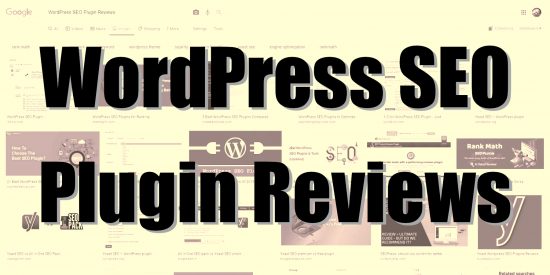
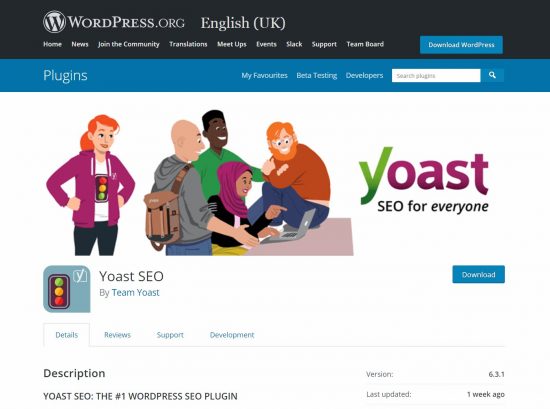
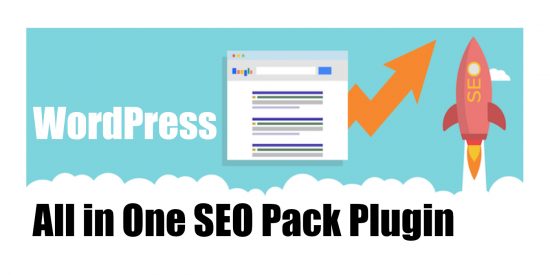
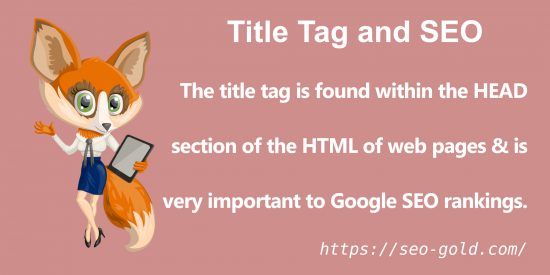
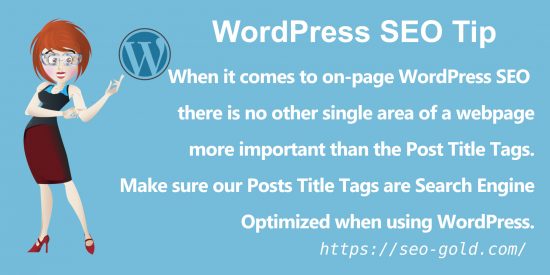
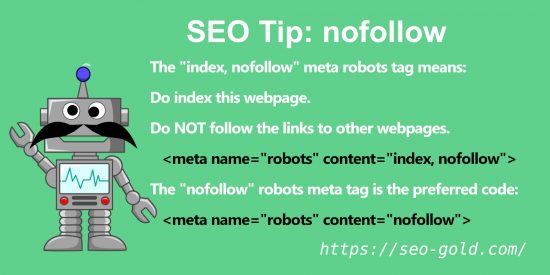
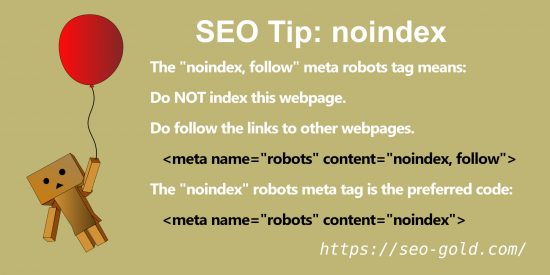
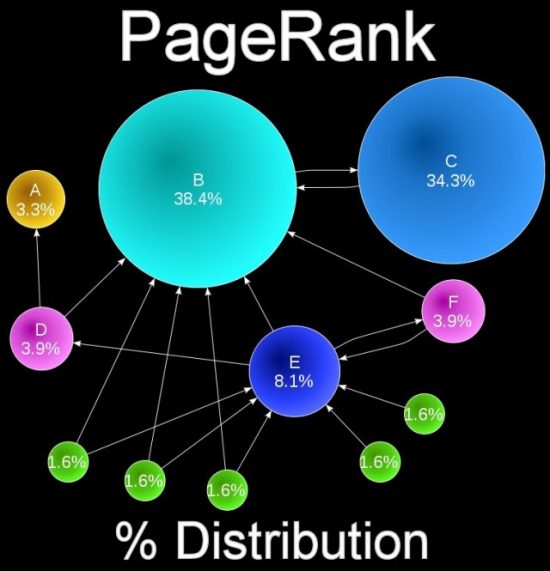
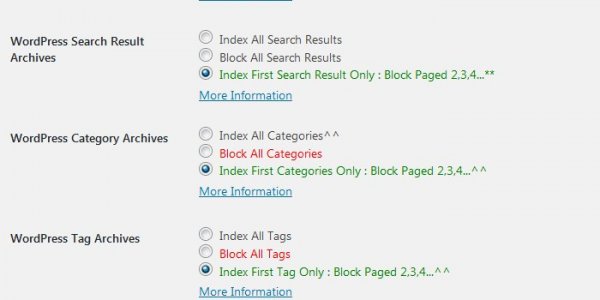


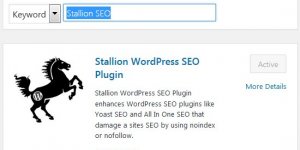
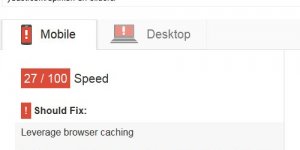


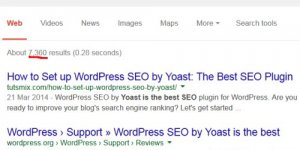
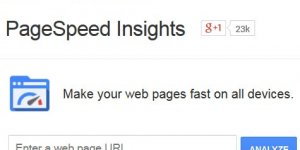
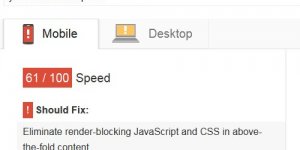
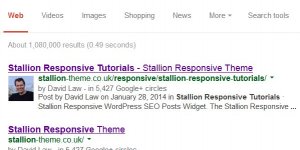

I want to purchase this theme. But first I need to ask if another theme that you linked to on one of your other pages can be purchased. The theme is here:
I want to use the plugins that you mentioned to make the blog into a WordPress SEO CMS for my website.
Also I know from your comments and research that the ad placement above is the best. However, with the travel site above they have also put adsense block in the top left. Does this increase the ctr or does it make visitors leave faster as they may think it is too much advertising?
Hi Clayton,
The travel site (I own it BTW) uses the Talian theme with one minor change, the “Travel Adventure Deals” menu item (on the right) is a hand coded form Widget for for a travel affiliate I’m signed up to (make no money from it though!).
Everything else is the Talian with AdSense/SEO theme out the box, so you won’t have a problem putting the menu ad where you want it as long as you use widgets (not hard to learn).
The left and right menus are arranged differently to this site by using the WordPress built in Widget page: found on your Dashboard under Appearance/Widgets.
All my themes are fully widget compatible, if you’ve not used widgets you really should take a crack at them because it allows you to only add the menu items you want and use and in what ever order you like.
For example if you don’t use Tags or Pages (no About page for example, I rarely keep the about page) on your blog there’s no point having the Tag and Pages menu items since they’ll be empty and look out of place, so you use the widget page to only add the ones you use and leave the rest out.
This is why on the Google AdSense Templates site the menu AdSense ad unit is on the right and on the travel site it’s on the left.
This site is about selling AdSense themes and so I want visitors to see the Test a Theme links far more than I want them to click a Google ad.
When I rebuilt the themes for selling I worked on the principle most customers want to make money from their blogs, but in general they aren’t creating Made For AdSense (MFA) sites (site made only to make money from AdSense), so sites like this one.
The opposite is true for the travel site, since the travel site is 100% information pages, an MFA site that I want visitors to click the AdSense ads as soon as possible and having the menu ad on the top left results in a higher CTR, but it doesn’t look as good (ad cluttered).
Basically because I sell something on this site I want visitors to click the ads as a secondary option, but on the travel sites it exists for visitors to click the ads. On this site I also have to take into account I want to show potential customers what their sites will look like, so I’ve gone with a slightly cluttered ad look, but the ads on the right menu not left.
On most sites I put the menu ad where I think the majority of visitors will accept them without thinking the site looks like it’s only there for AdSense. All depends on the site.
So a site where you have a lot of loyal readers you don’t want to use the setup I have on the travel site! On the other hand if like the travel site 99% of the traffic each day is new visitors from search engines and there’s not really any loyalty to your site, little point worrying about what a visitor will think long term.
Good thing is because of widgets you can set the menu ad anywhere on the menus (or not have one at all), you can also change the size and colours of the ads via the adsense.php file as well, so if you have a lot of very loyal readers who might be irritated by a lot of big ads, you can make them smaller very easily.
David Law
Thanks for the excellent answer. Your templates look awesome and by using the wordpress widgets I can put the adsense ads whereever I want on the right and left menus. My site is a hiking site and the visitors are 90 percent new visitors from the search engines so I will test to see what brings in the most revenue.
One of the reasons I am purchasing this template today is because I could not get the adsense ads into the individual page posts like you have with your adsense template.
The main reason I am purchasing this template is the SEO setup. You really know your stuff!
Thanks,
Clayton – Kelowna BC, Canada.
Wow
I thought I was the only one stupid enough to upload a theme as a plugin.
Thanks for making me feel at home.
Rick
No problem at all!
Now, let’s see what I can stuff up today…
Cheers,
Colin
Uniquefier WordPress Plugin Review and Why You Shouldn’t use the Uniquefier WordPress Plugin.
Some Massive Passive Profits Autoblog Plugin users are using another paid for WordPress plugin called Uniquefier to ‘rewrite/hide’ the duplicate content autoblog plugins create.
Unfortunately they don’t understand how the Uniquefier plugin works.
The reason why the Uniquefier plugin ‘works’ is because it completely hides the content from search engines by turning it into javascript content which search engines can’t read. So it doesn’t rewrite content, it hides it and if it’s hidden search engines can’t rank a site for the hidden content.
If you use the Uniquefier plugin you might as well not create autoblogs as all Google etc… will see is the template of the site and few other bits of content (the title of a post multiple times depending on the template).
Google will see the header (the sites title etc…), your sidebars, your footer and the name of the hidden post. All the important content, text, images, videos that’s within the post will be gone as far as Google and other search engines are concerned.
Uniquefier doesn’t rewrite duplicate content, it hides it and leave so little content on a page for the search engines to index you’ll probably find your sites are removed from Google. I use this concept (javascript content, not this WordPress plugin) for hiding affiliate links, but would never use it on the main content.
I’m afraid other than actually rewriting the duplicate content (there are ways to do this, but they aren’t very good) you just have to accept your sites will be downgraded in Google long term, which is why if you get into autoblogging it’s a case of as the sites go down (downgraded) you create more to replace them. It’s a numbers game, the search engines take time to find and downgrade sites running duplicate content, in that time you make money.
Take a read of Making Money Online with Thin Affiliate Sites as well.
David
David,
I would like to install a plugin called “cryptographp” ( a captcha signin) instead of using the akismet filter and it says to edit the theme folder in the comments area where the word “” is available by adding the tag line.
Looking at the Talian 05 theme editor I cannot find anything called “form” in the code, so is it possible to install cryptographp in the Talian 05 theme?
Thanks,
Randy
Not familiar with that captcha plugin. Usually if you want to add something specific to the comments area it requires editing the comments.php file.
I think some of your comment above didn’t get through the HTML filter (WordPress removes some HTML code).
You are probably wanting to edit the comments.php file near the bottom around:
</form>For future reference to post code in a way that’s not filtered in a WordPress comment you have to replace all the
<
signs with
<
David
David,
I reinstalled the default “tag clouds” (I think this is the default anyway) but I’m not sure how to add tags to my posts?
Also, shouldn’t the videos show up on each page other than linking from [Watch]… ?
Thanks,
Randy
I believe the Massive Passive Profits Plugin has the ability to auto tag the posts, though you’ll probably find they aren’t tagged very well.
You can also get free plugins (don’t ask which as I don’t use them, not a big user of tags, prefer categories) to auto tag your posts, they can look at places like Yahoo for relevant tags.
For non autoblog posts (so posts that are very important) add the tags manually, it’s on the right hand menu when you create or edit a post (similar to adding a new category when creating a new post).
If none of your posts have tags currently a tag cloud widget won’t have any tags. You can see it in action if you add a non GAT tag widget and in the widget settings select tag categories instead of tags.
See the Post Teaser plugin on the WordPress SEO Plugins page for having YouTube videos and images shown on the home page and other archive pages.
David
Hi Randy:
Try using the WP Auto Tagger plugin for your auto-blogged posts.
Thanks,
Glenn
Glen,
Thanks for the suggestion… have you had any problems with WP Auto Tagger spamming your blog links?
Thanks again,
Randy
The WP Auto Tagger plugin author has added some code to add a link to the blogroll (didn’t install the plugin, just looked at the code).
Bit cheeky to do that!
Easy to remove: edit the file auto-tagger.php in a text editor.
Find:
if($wpdb->get_var("SELECT COUNT(link_id) FROM $wpdb->links WHERE link_url='http://wordpresssupplies.com/'")==0)wp_insert_link(array('link_name' => 'Wordpress Themes', 'link_url' => 'http://wordpresssupplies.com/', 'link_description' => 'Download Free WordPress Themes and Plugins' ));
And either delete those two lines or add # signs like:
# if($wpdb->get_var("SELECT COUNT(link_id) FROM $wpdb->links WHERE link_url='http://wordpresssupplies.com/'")==0)# wp_insert_link(array('link_name' => 'Wordpress Themes', 'link_url' => 'http://wordpresssupplies.com/', 'link_description' => 'Download Free WordPress Themes and Plugins' ));
Save, upload etc… and when the plugin is activated it shouldn’t add links to your blogroll.
Not tested this, but 99% sure it will work.
The code is activated when the plugin is activated, so you could activate the plugin as it is and delete the link from the blogroll under the links menu in your Dashboard. Note if you deactivate and reactivate another link will be added and if you’ve made the changes above and then update the plugin automatically and deactivate/reactivate the link would be added.
Very cheeky to not ask and give users the ability to say no/remove the link. Would probably get removed from the WordPress plugin repository for doing this if the right people are told about it.
David
David,
This script change is for my real estate website blog:
I changed the code script by adding the # signs where you suggested. When installing the widgets I used the “Tag Cloud” widget for sidebar 1 and named it “Tags” and for the Taxonomy I used “Post Tags”.
What’s happening is in the Tag Cloud on sidebar 1 I now have tags showing and I also have tags showing in the middle of the page? Is this the way it should look or have I done something wrong?
Thanks,
Randy
Your Post Tags (the ones in the content) and Tags Widget (sidebar tag links) are as they are supposed to be.
I note on your right sidebar you have a Calendar, the default WordPress Calendar widget code is broken!
The code is so bad SEO wise I’ll be disabling that widget in the next theme update (it should never be used with any theme).
Basically when you use the default Calendar widget the links within it include a title tag that includes the text of the entire post! If a calendar shows 30 links that’s the entire text content of 30 posts!!!
I’m not sure what WordPress development were thinking when they made this widget, but it’s very poorly thought out as it has the potential to increase the download time for a page due to page size (you might have 100KB+ text in that widget on every page!).
David
Hi Randy:
No problem!
Regarding the spam issue … yes, I do get spam, but not a whole lot of them. And I rely on the Akismet plugin to block all spam messages now.
You will need to get the Akismet API code from, I believe, the Akisment website, and use that code to activate the plugin.
Good luck w/ your MPP sites!
Glenn
David,
I took your advise about not using specific characters and removed the code that was in the Massive Passive Profits Autoblog Plugin Global Exclude Keywords box and everything seems like it’s back to normal.
On another note?… can you use the Talian 05 theme and make a membership site out of it? If so, what would I need to do or add?
Thanks,
Randy
I’ve never built a membership site so not sure. If the WordPress membership plugin you use (there are WordPress membership plugins) says it works with any WordPress theme there shouldn’t be a problem.
David
Hi David just read your article above very interesting, in your WordPress SEO Theme have you now included the above?
I know an amazing programmer who knows things much more advanced than php and C++ I have over the years been studying SEO like you one guys work I admire is Sean Donahoe but I think you have drilled down the nofollow a little deeper than him
Let me know what you need exactly and in list format ie what you need to be done and I’ll send it to my friend
Regards Rich ps
Hi, David
I installed plugins as you said in your tutorials. I want to display Panda on the related articles but I can’t, so where can I check it?
another is that I don’t want to display (powered by Stallion WordPress SEO Theme) at the footer, where can I hide it?
Thank you,
Ratanak
The blinking panda image is part of the “Contextual Related Posts SEO Version plugin” from my other site.
I’m working on an updated list of SEO plugins at WordPress SEO Plugins which is added primarily for Stallion theme users.
For example I just uploaded an updated version of the Contextual Related Posts SEO Version plugin with Stallion relevant improvements which I’ve called
Stallion Related Posts WordPress SEO Plugin
This is a better version of the “Contextual Related Posts SEO Version plugin” specifically for Stallion users. If you run Stallion and the “Contextual Related Posts SEO Version plugin” disable that plugin and install the “Stallion Related Posts WordPress SEO Plugin”.
To remove the powered by affiliate link go to your Stallion Clickbank Options page and turn the link off near the bottom.
David
Hi, David
Thank you for your great help. What is the difference between Stallion related post and contextual related post. I like the panda image, so is it possible if I use it for my blog.
Oh, How can I use color for my text? for example, it always appears black for my text but I want to highlight with blue or something but I don’t know where to edit it.
First I think it could edit in post when I wrote but there is no tool to edit the color of text. Do you know it?
One more is that I want to have the running headline, which plugin should I use? for example, there is a good news that I want to let it run below the header of my blog but I don’t know which plugin to set, so I hope that you can tell me.
Thank you so much,
Your theme is now getting interested more in many bloggers in Cambodia so I think that I would invite them to buy from you.
Ratanak
You got me thinking about creating better copy. Not only from increasing the focus on my pages in terms of keywords, but also toning down articles that might be over-SEOed.
What I found was something like this – inboundwriter.com. It is basically a keyword helper, but a little more eloquent and in a live mode lets you compose more targeted content with setting for Adsense – target market (education level) and competitiveness.
Maybe it will not help me write better copy but it might make me more cognizant of focus.
I also think in the spirit of LSI (latent semantic indexing techniques) a thesaurus or deploying antonyms/synonyms suggestion tool would help prevent over using words and take it a step further. It would also function to let the search engines feel you are a natural or sophisticated writer (everyone likes reading a good English, it inspires me).
Which leads me to my point and suggestion. Do you think something like this,a plugin for Stallion or a component of Stallion would be of any value? I understand it would be a lot of work and might make it bulky, but if polished content is search engines like, maybe this would make your theme even more unique. That is, a tool to help people with quality content.
I use Inboundwriter also. I have also cut back on my keywords. I am really researching my niche when i write articles, and adding LSI keywords. And making sure my content is worth reading.
And my website rankings show it. I am taking an seo course and that helps. Also get natural links instead of buying links. I seem to be doing really well with traffic.
I’ve wrote something about inboundwriter.com before and I wouldn’t use it.
The problem with WordPress plugins (any service) that looks at keyword density etc… is they look at the users content ONLY and not at what the theme and plugins output as well.
If this comment was a post let’s see how well optimized the main content and the title is for the single keyword “InboundWriter” on the Stallion SEO Super Comments page (link bottom right corner of this comment).
I’m not going to use the KEYWORD again, so the KEYWORD is used twice in the title tag and the KEYWORD is used twice in this body text.
So it’s used four times by the user (me) any other uses of the KEYWORD is due to Stallion (the theme) or plugins.
Go to the Stallion SEO Super comments page and count the number of times you see the KEYWORD.
I count 12 times not 4 times.
3 of the times are due to the Stallion Recent Comments Widget, when more comments are made that number will go up or down.
The main content density as seen within the edit post form is not the keyword density on the page output to Google. This is a super comments page not a proper blog post, blog posts are seamlessly integrated into WordPress so the density is ignoring internal links, headings and anything else that uses content from the posts. What happens if I have loads of posts about the KEYWORD, now we have links using the KEYWORD as anchor text within recent articles, recent comments, most popular widgets and the related articles plugin output which would push the density right up.
A good example is looking at any of this sites post that are optimized for SERPs including
Stallion, SEO, WordPress, Theme
There’s loads of posts and comment using those keywords and they dominate the anchor text of internal links. How could a plugin take this into account when only looking at the users content?
David
I use Yoast WordPress SEO as well. I absolutely love the fact that it takes care of pretty much everything… where would we all be without it!